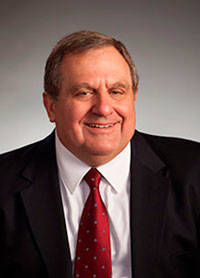More battery operated cars and trucks are making their way on to streets and highways, so why not trains? That may not be too far off if BNSF tests are successful.
BNSF and Wabtec (formerly GE Transportation) are developing a battery-electric high-horsepower road locomotive—the type that moves freight trains between Seattle and Chicago. Once all the equipment and support systems are in place, the plan is to run tests between Stockton and Barstow, California, (350 miles) beginning in late 2020.
BNSF and other railroads are already using low-horsepower battery-electric locomotives in urban rail yards. Newer diesel hybrid switchers save fuel and reduce greenhouse gas emission by shifting power to banks of batteries while idling. That technology is particularly important because cities have high concentrations of noxious air emissions.
“What’s different about today’s batteries is that they are significantly more powerful than before, and manufacturers have improved battery quality, reliability and technology so we’re able to test their power for our road locomotives,” said BNSF’s Michael Cleveland, senior manager, emerging technologies.
Last year, BNSF and Wabtec, aided by a $22.6 million grant from the California Air Resources Board, joined forces to begin developing a 100-percent battery-electric road locomotive prototype that works with conventional diesel locomotives to make a battery-electric hybrid “consist.” (Consist refers to when two or more locomotives are coupled together).
BNSF’s prototype will use a battery cell similar to what you might find under the hood of an electric car. It is a lithium-ion energy storage unit with cells that contain a combination of nickel, manganese and cobalt. In terms of size and packaging, however, it’s on a totally different scale.
Once fully developed, the battery-electric locomotive is expected to significantly reduce greenhouse gas emissions. It will have a battery with approximately 20,000 cells and future versions may have as many as 50,000 cells.
While in the rail yard, “the consist” will shut down diesel engines when possible. It will change over to a battery-electric locomotive unit which also reduces noise. Once on the road, they can “graze” on battery power when the train is cruising through open landscape, saving hundreds of gallons of diesel.
The question arises: Why not just install overhead power lines and bring back the old Milwaukee “Little Joe” electric locomotive? Many trains in Europe and in the northeastern U.S. still draw power from overhead electric lines.
In the Pacific Northwest, the Milwaukee Road, the last transcontinental line to be built, electrified its lines across the Rocky Mountains and to the Pacific Ocean starting in 1915. However, the Milwaukee Road replaced electric locomotives completely in 1974 before it ended service in 1980.
The chief disadvantage of electrification is the high cost for infrastructure: overhead lines or third rail, substations, and control systems. Those costs were particularly high in the sparsely populated western part of our country which has lower volumes of freight and passenger traffic.
Today, battery-operated trains are a key component of the railroads “green strategy.”
According to the American Association of Railroads (AAR), in 2017 alone, U.S. freight railroads consumed 732 million fewer gallons of fuel and emitted 8.2 million fewer tons of carbon dioxide than they would have if their fuel efficiency had remained constant since 2000.
AAR said U.S freight railroads, on average, move one ton of freight 479 miles per gallon of fuel. By comparison, a tug pushing a barge on the Columbia and Snake rivers can haul a ton of wheat 576 miles on a single gallon of fuel.
Hopefully, BNSF’s new hybrid system comes to fruition. It is a way to save fuel, reduce air contaminants, provide family-wage jobs and keep America’s economy moving.
Don C. Brunell is a business analyst, writer and columnist. He retired as president of the Association of Washington Business, the state’s oldest and largest business organization, and now lives in Vancouver. He can be contacted at theBrunells@msn.com.


